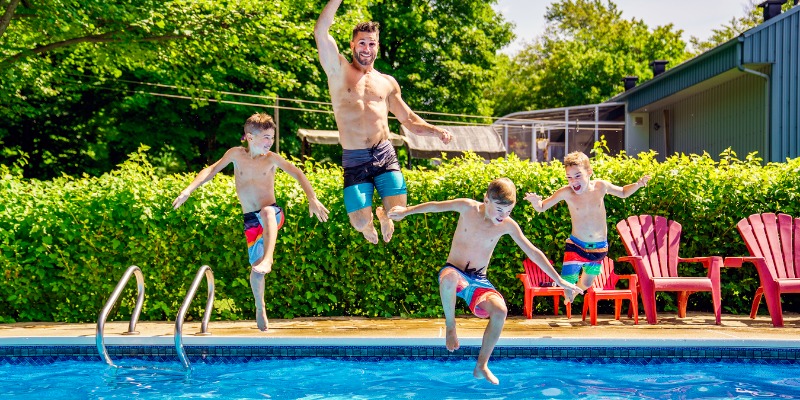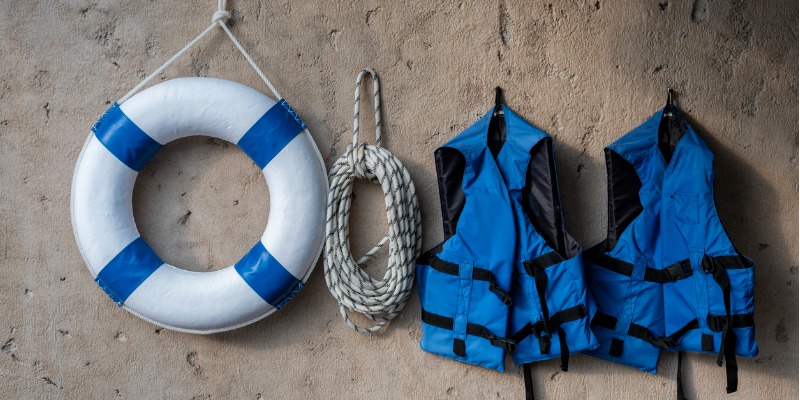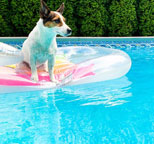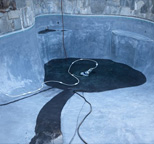
Summer is almost here, and so is one of the summer’s most treasured activities – swimming. Whether you intend to organize a pool party or foray into the pool with your toddlers, you need to follow some pool safety tips that will keep you and everyone else safe.
Pool safety combines a range of different factors that include safety products and equipment, rules and regulations, proactive measures and individual responsibility. Keep reading to discover pool safety tips in a range of different scenarios for ultimate fun and excitement this summer.
Importance of Safety Rules in Swimming Pools
When it comes to swimming, there are a few activities you can participate in that result in such final and absolute consequences if things go wrong. There are also few activities where people from all different age groups and skill levels participate, but swimming fits that description. Safety rules in swimming pools are a must and there is never debate on their importance. Here are some reasons why you need to have safety rules when swimming:
To prevent drowning: Drowning can happen surprisingly quickly and it’s not uncommon for someone to drown even when a crowd of people is around them, or in a shockingly small amount of water. With concrete safety rules in place, you can prevent many of the circumstances that lead to drowning.
To prevent pool drain entrapment: if there is an open drain at the bottom of a pool, it can suck in clothing or a body part, trapping the swimmer under the water. There have been stories of this happening, mainly to children, and it’s important for everyone who goes into the pool to be aware of the drain (if applicable). These drains can be closed off when your liner gets replaced. A safety feature many decide to go with.
To prevent other injuries: Having clear safety rules can also help prevent head injuries, fractures, spinal cord injuries, and other serious injuries from occurring.
To prevent legal liability: Depending on the situation, you may be legally liable for a serious injury or drowning that occurs in your pool. If you have clearly defined safety rules in place, you can help protect yourself and everyone else that swims in the pool. Don’t forget, special insurance is required if you have a pool on your property.
Pool Safety Tips for Parents
If you’re a parent, safety is always going to be on the top of your mind when your kids are around the pool. There’s a lot of information available on how to make the pool safe for toddlers and kids of all ages, and it’s important that you create solid ground rules to follow before you allow your kids around any pool. Here are some to keep in mind:
- Obey all the pool rules at all times
- NEVER swim alone
- No running on the pool deck
- No diving in the shallow end
- No playing around pool drains or covers
- No wrestling or roughhousing
- Use pool toys and equipment properly
- Get out of the pool and in the house if there’s a storm
It’s also important for parents to know how to respond properly in the case of an emergency. You should know the basics of CPR and first aid and always have your phone available to call for help if needed. You should also teach your children to notify an adult immediately if they notice anyone having trouble in the water.
Pool Safety Tips for Homeowners
Here are some pool safety tips for homeowners that will help keep everyone safe and keep you out of trouble:
- Have a locked fence separating the pool from your home and the rest of the yard
- Have clear pool safety rules posted
- Instruct children on the rules of the pool before allowing them in
- Consider having alarms installed on access doors
- Never let any children swim without adult supervision
- Don’t place anything near the fence that someone can use to climb over and into the pool area
- Make sure the doors of your house don’t open directly into the pool area
- Store any chemicals used to clean the pool away from children
For more information about pool safety and the responsibilities of a homeowner contact your local municipality and/or insurance providers.
Pool Safety Tips for Babysitters
Babysitters often find themselves watching kids while they are swimming. If you are a babysitter and part of your job is taking the kids to a pool or watching them while they swim in their own backyard pool, make sure you are well versed in all of the safety aspects of your job. Always remember that is your responsibility to see that the kids are safe and happy and that it only takes a moment for tragedy to strike when you are around the pool.
Here are some pool safety tips for babysitters that will help keep you and the kids safe:
- Only take them swimming if you are a strong swimmer yourself
- Get certified in CPR
- Create a clear set of rules for the kids to follow
- Ask parents if the children know how to swim
- Take your job seriously and watch the kids the entire time they are in the water or around the pool
Keeping your family safe is your number one priority and ours. Visit our website or contact us today to purchase your pool safety products.
Pool Party Safety Tips
Pool parties are a great way to bring friends and family together to create lasting memories. Depending on the nature of the party, you may have all adults, a mix of kids and adults, there may be alcohol served, it could last for hours into the night, or any combination of these scenarios. To help ensure that the only memories from your pool party are good ones, consider these pool party safety tips:
- Designate at least one adult to watch kids in the pool at all times
- Post rules and safety tips for everyone to see
- Establish clear rules for young children and non-swimmers
- Monitor guest alcohol consumption and ensure they are safe around the pool
- Avoid the use of glass (bottles, glassware etc.) around the pool
- Make sure at least one person is certified in CPR

Pool Safety Products
Creating rules and guidelines is a crucial part of overall pool safety, but you can also enhance the safety level by using a range of proven pool safety products. You don’t need all of these to maintain a safe environment in the pool area, but the more you have, the safer everyone will be. Here are some products and equipment you might want to consider:
- A self-locking fence that cannot be climbed and completely encloses the pool
- Childproof locking mechanisms on all gates
- Door alarms on doors that can be reached by children and lead to the pool area
- Security cameras
- Pool safety covers that don’t retain water on the top
- Smart door sensors on the pool gate
- Non-skid surface on the pool deck
- Ring buoys with a throwing rope
- Divider rope to separate the shallow end and deep end
- Life jackets and water wings for non-swimmers and children
- Underwater motion alarms
- Pool fence alarms
Important Facts About Water Safety
Parents, homeowners and others that love to spend time around the pool should be aware of water safety facts that will keep everyone safe during what should be one of the most fun times of the year.
Every second counts when it comes to a water emergency, so make sure to follow all of the pool safety tips outlined in this guide and always keep your phone handy in case there’s an emergency and you need to call for help.
How Can We Help?
A safe and fun summer is what we are all about. If your goal is to have a safe and memorable summer by the pool, don’t hesitate to get in touch with us so we can help you make the most of your outdoor time with a range of exciting products.
Updated 2023.





